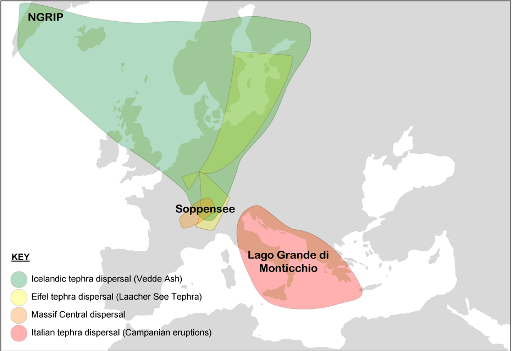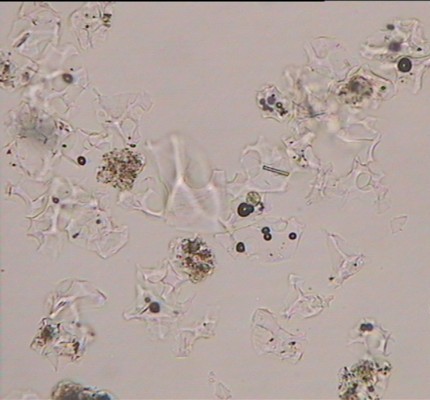WP-6 Abrupt environmental transitions (AETs) and tephras in continental records
Three major developments have recently transformed the dating potential of tephrochronology in Europe and the Mediterranean region:

- Regional tephrostratotype sequences: palaeo-records containing near-comprehensive series of tephra layers, preserved in unequivocal stratigraphic succession have been reported from continental archives, where the ages of layers can be assessed using several independent methods, e.g. radiocarbon dating and varve chronology.
- These sequences provide comprehensive training sets for determining the diagnostic geochemical signatures which discriminate distal tephra layers and these can be linked to source volcanic eruptions providing that consistent and appropriate analytical procedures are employed.
- Comprehensive suites of geochemical data have been compiled for the majority of proximal tephra deposits of Late Quaternary age originating from Italian, German and Turkish volcanic provinces; many of the layers have been dated using high-precision Ar-Ar and other radiometric methods.
Aims and Research Objectives of WP-6
This work package seeks to provide a more secure palaeoenvironmental context for assessing the link between archaeological events and AETs in continental Europe. Terrestrial palaeoenvironmental archives will be targeted for microtephra analysis, with the aim of building regional tephra records, to which tephra-bearing archaeological sites can be correlated.
- To provide a more secure chronology for continental AETs;
- To link archaeological and lake records by tephrostratigraphy;
- To link continental and marine records by tephrostratigraphy;
- To independently test radiocarbon-based age models obtained for marine sequences.

Research focus
The research methodology will use tephrostratigraphy to tie terrestrial sequences (both palaeoenvironmental and archaeological) to the marine and ice-core records. Work will focus on sites that permit high temporal resolution, and those which can be successfully connected to varved records. The latter will permit sharper definition of the duration of transitions and events, even where the absolute ages remain unresolved or unclear. We anticipate the lynch-pin sequences to include: Soppensee in Switzerland (pictured right, courtesy of Andy Lotter) and Lago Grande di Monticchio in Italy.
Our purpose of this work package is to define, with specified ranges of uncertainty, the magnitude of leads and lags in AETs between widespread marine, terrestrial and ice-core records, and between AETs and archaeological events. Comparisons with ice-core data will be by agreed partner status for the NGRIP ice-core team (Copenhagen) and Siwan Davies (University of Wales, Swansea). The data we will generate will be used to examine a number of key hypotheses which are fundamental to RESET:
- That AETs are synchronous across western, central and southern Europe;
- That AETs in Europe were driven by North Atlantic ocean processes and are synchronous with events recorded in the Greenland ice-cores;
- That archaeological events in Europe are synchronous with continental AETs over the past 140 ka.

|

|
Optical microscope image of vesicular tephra shards. Each shard is less than 125 microns in size.
|
SEM image of glass shards from distal deposits of the Icelandic Vedde Ash, collected in Norway.
|





